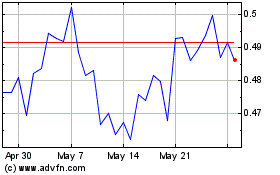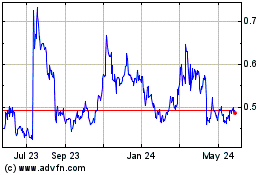Stable coins: A hedge against crypto volatility?
August 07 2018 - 7:09AM
ADVFN Crypto NewsWire
 A stable coin is also a
cryptocurrency, but its value is pegged to a relatively stable
asset, like gold or a US dollar, and unlike bitcoin or
ethereum
A stable coin is also a
cryptocurrency, but its value is pegged to a relatively stable
asset, like gold or a US dollar, and unlike bitcoin or
ethereum
Banks and other Reserve Bank of India-regulated entities
stopped servicing cryptocurrency
exchanges last month, as per an RBI directive. But within a day
or two, at least two cryptocurrency exchanges in India took the
peer-to-peer trading route to enable crypto-rupee trading. Read
here. P2P transactions, however,
do not hedge you against price fluctuations, which can be
significant in crypto markets, even in a short span.
In a regular transaction, where the exchanges are supported by
the banking system, buying/selling a crypto asset is instant, and
the price gets locked immediately.
However, in a P2P system, when a seller matches with a buyer and
the transaction is initiated, the seller’s crypto asset is locked
in an escrow. The buyer transfers the amount to the seller before
getting the asset after due process. The actual transfer could take
some time.
It is highly likely that the price of the crypto asset in
question changes during that time. If the price depreciates,
the buyer will be at a disadvantage, and vice-versa. Stable coins
resolve this issue.
Stable coin
A stable coin is also a cryptocurrency, but its value is pegged
to a relatively stable asset, like gold or a US dollar, or other
assets easily available globally and does not fluctuate much,
unlike cryptocurrencies like Bitcoin or Etherium that are highly
volatile.
The companies launching stable coin maintain a reserve of the
pegged asset. If a crypto company launches a stable coin pegged to
the US dollar, it is expected to maintain a reserve of dollars in
its publicly auditable accounts that is equal to the volume of the
crypto issued.
In a P2P transaction, the seller can convert the crypto asset to
a stable coin just before locking the value. So if the value is
locked at $1,000, the buyer will transfer the amount and the value
in terms of the stable coin as well as the rupee will remain the
same for both the buyer and the seller. This gives the buyer an
entry and the seller an exit at a known price point. Later, the
buyer can use stable coin for crypto-to-crypto deals.
Indian exchanges offering P2P crypto-to-rupee trading are using
stable coins pegged to the US dollar. Koinex is using a stable coin
called TrueUSD, while WazirX is using USDT or Tether.
All stable coins have advantages and disadvantages, in terms of
transparency of issuance or audits. Consider all the risks before
investing.
Ripple (COIN:XRPEUR)
Historical Stock Chart
From Apr 2024 to May 2024

Ripple (COIN:XRPEUR)
Historical Stock Chart
From May 2023 to May 2024
